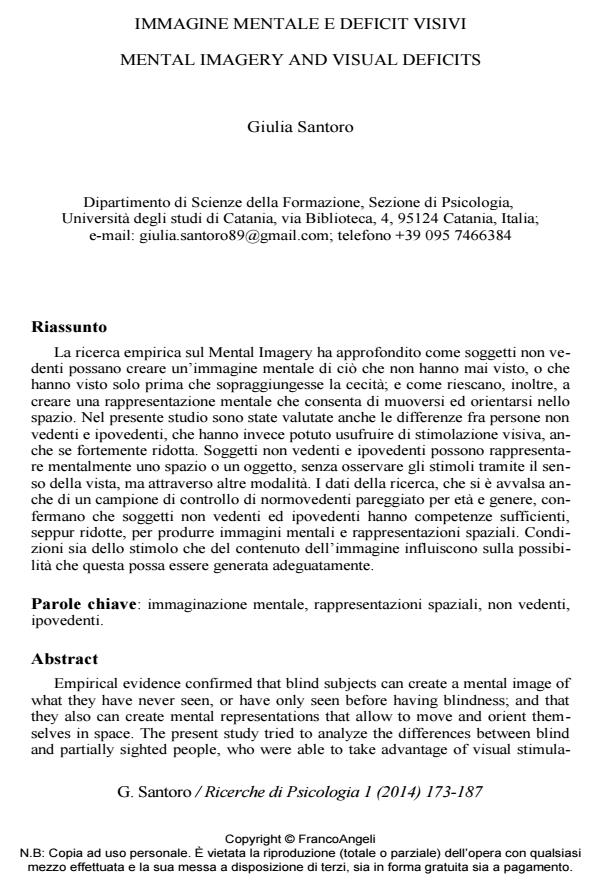Mental imagery and visual deficits
Journal title RICERCHE DI PSICOLOGIA
Author/s Giulia Santoro
Publishing Year 2014 Issue 2014/1
Language Italian Pages 15 P. 173-187 File size 194 KB
DOI 10.3280/RIP2014-001010
DOI is like a bar code for intellectual property: to have more infomation
click here
Below, you can see the article first page
If you want to buy this article in PDF format, you can do it, following the instructions to buy download credits

FrancoAngeli is member of Publishers International Linking Association, Inc (PILA), a not-for-profit association which run the CrossRef service enabling links to and from online scholarly content.
Empirical evidence confirmed that blind subjects can create a mental image of what they have never seen, or have only seen before having blindness; and that they also can create mental representations that allow to move and orient themselves in space. The present study tried to analyze the differences between blind and partially sighted people, who were able to take advantage of visual stimulation, although greatly reduced. The data confirm that blind and visually impaired individuals, compared with controls paired by age and gender, can mentally represent a space or an object, without seeing the stimuli, through other sensorial inputs. Both the stimulus conditions and the content of the image influence the possibility that imaging can be activated properly.
Keywords: Mental imagery, spatial representation, blindness, visual impairment.
Giulia Santoro, Immagine mentale e deficit visivi in "RICERCHE DI PSICOLOGIA " 1/2014, pp 173-187, DOI: 10.3280/RIP2014-001010